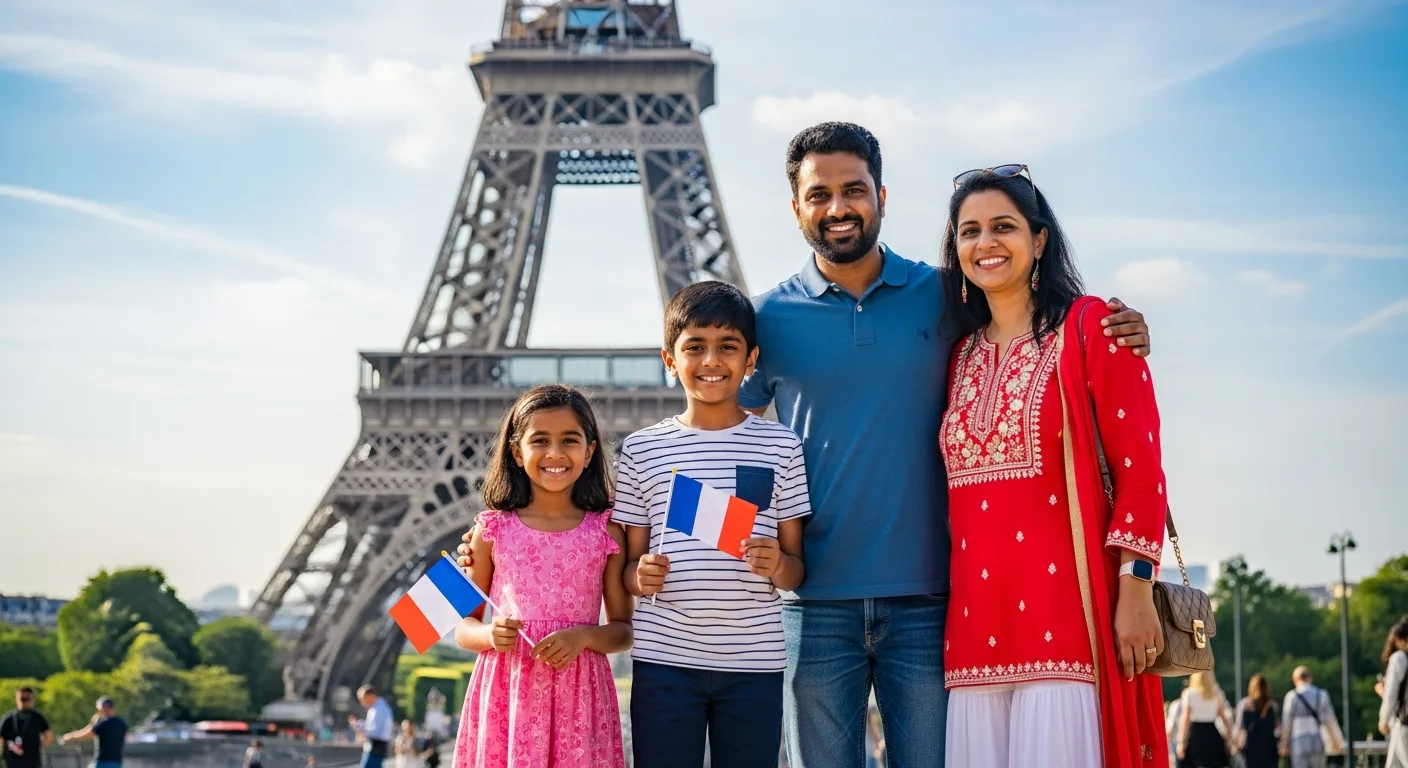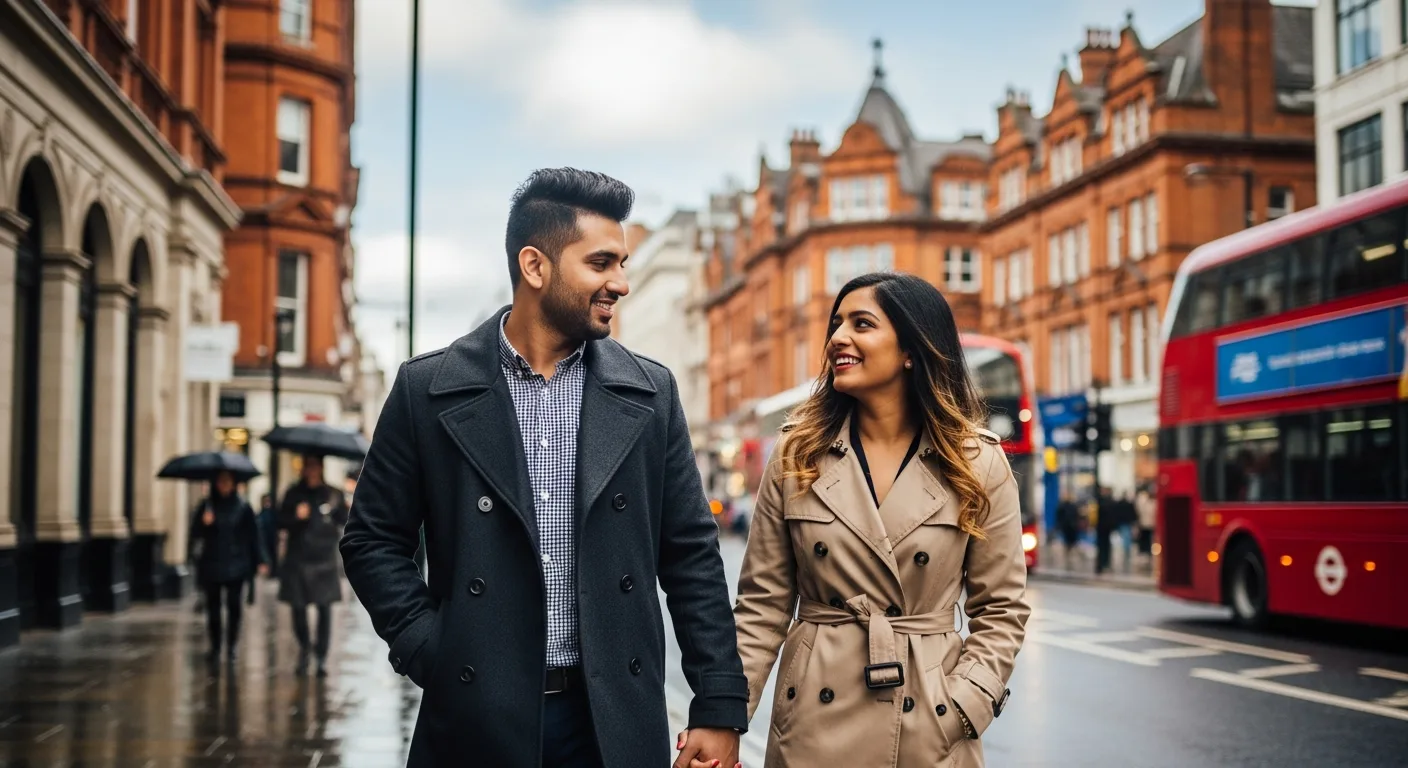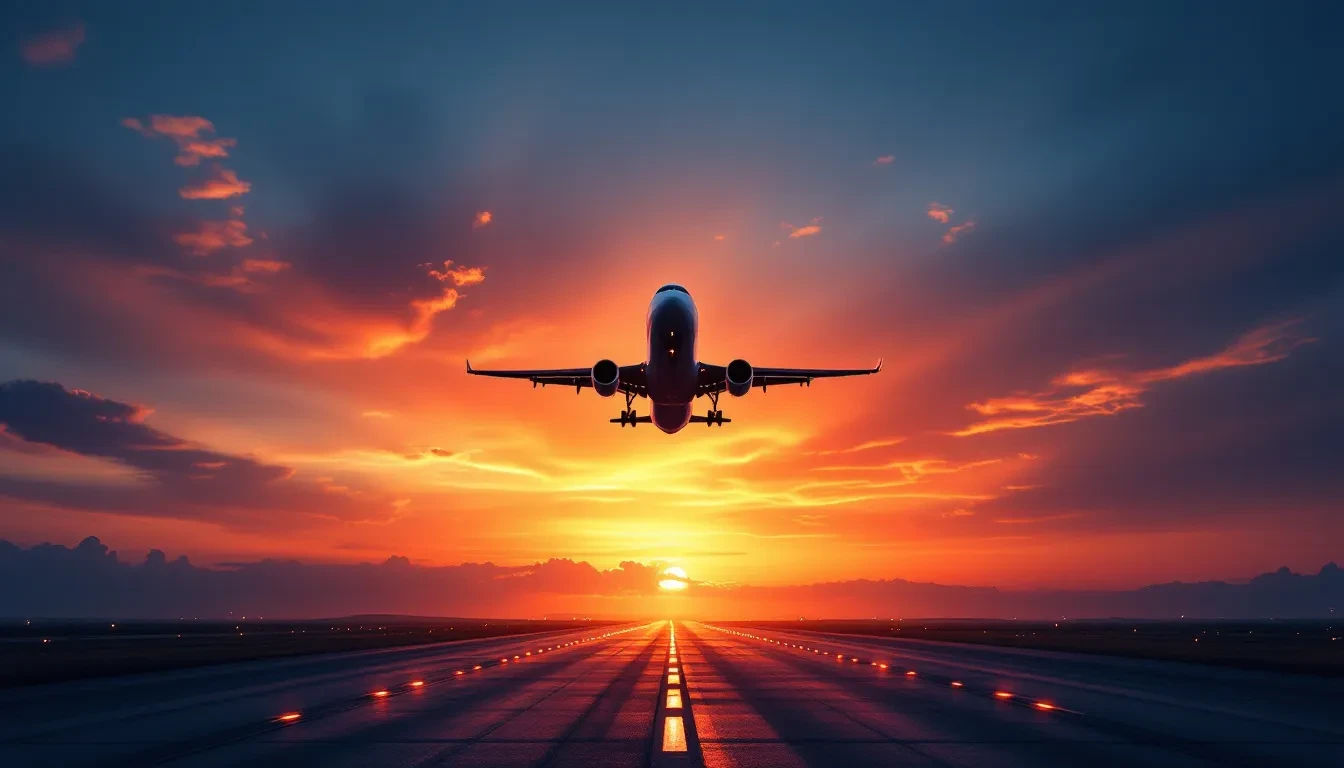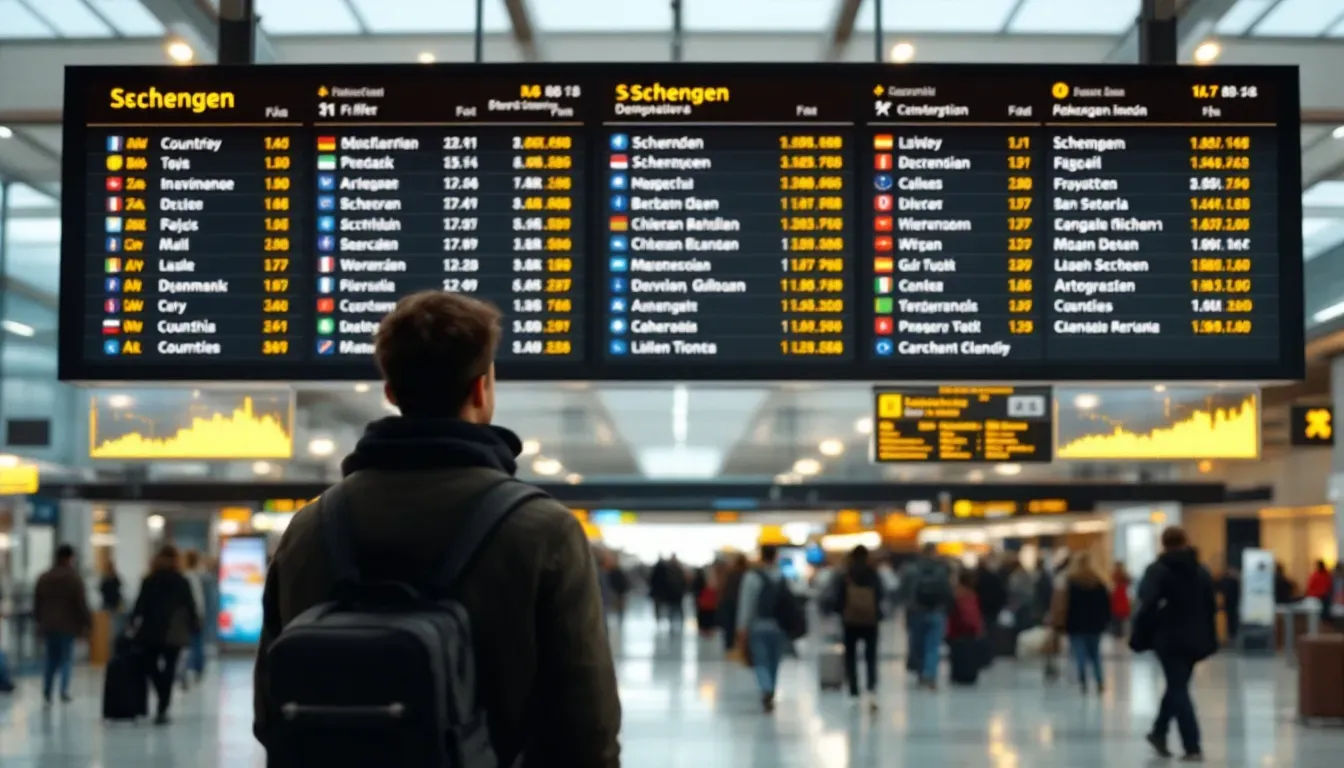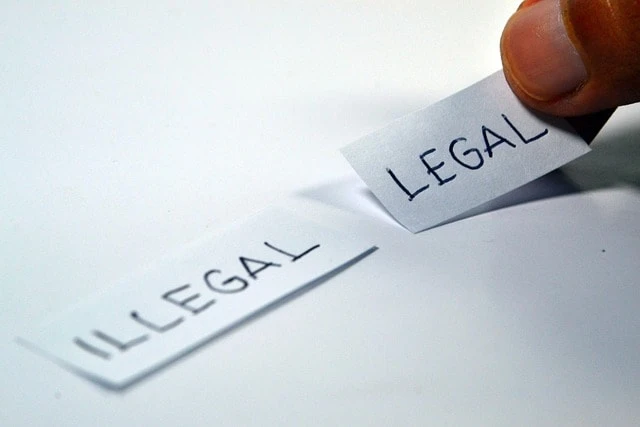Do You Need A Dummy Ticket For B2 Visa Application?
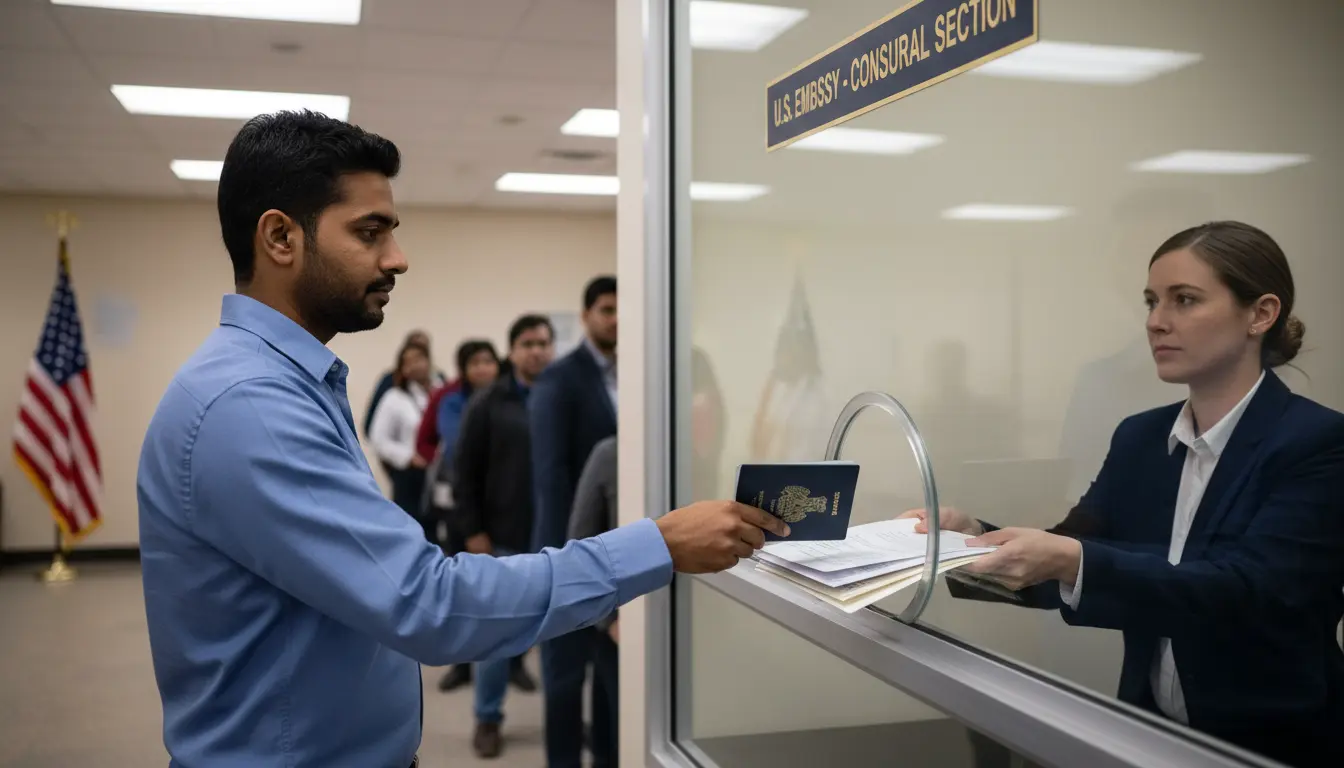
Is a Dummy Ticket Really Needed for B2 Visa? Find Out What Actually Works in 2025
Picture your B2 interview as a quick credibility check. You have minutes to show a clear plan, steady ties to India, and a trip that begins and ends on sensible dates. That’s where a verifiable flight reservation helps. It anchors your route, aligns with hotel holds, and keeps your DS-160 specific. Not mandatory. Helpful. Especially when you want your story to feel real to the officer. We focus on what actually moves approvals for Indian travelers. A dummy ticket can be the key piece that ties everything together without any financial commitment upfront.
Solid finances with ITRs. Employment or business continuity. Prior compliant travel. Clean documents. Then we layer the reservation on top as proof of a time-bound plan. Whether you’re a student, first-timer, parent visiting family, or a digital nomad taking a short break, we’ll keep this guide practical, consistent, and interview-ready. For more insights into visa preparation strategies, check out our blogs or dive into the details on our About Us page. Get your dates aligned in minutes with a dummy ticket.
While a dummy ticket is not officially mandatory for a U.S. B2 tourist visa, it is highly recommended to include a verifiable flight reservation as proof of travel intent. A dummy ticket with a real Passenger Name Record (PNR) demonstrates genuine plans to visit and return, which strengthens your case during visa interviews. Trusted providers like DummyFlights.com issue embassy-approved, verifiable bookings that can be checked directly on airline websites — ensuring compliance with U.S. Embassy documentation standards and avoiding suspicion of incomplete submissions.
Last updated: October 2025 — verified against current U.S. B1/B2 visa interview documentation practices at U.S. Embassies and Consulates worldwide.
Why A Verifiable Reservation Can Nudge Your B1 B2 Case In India
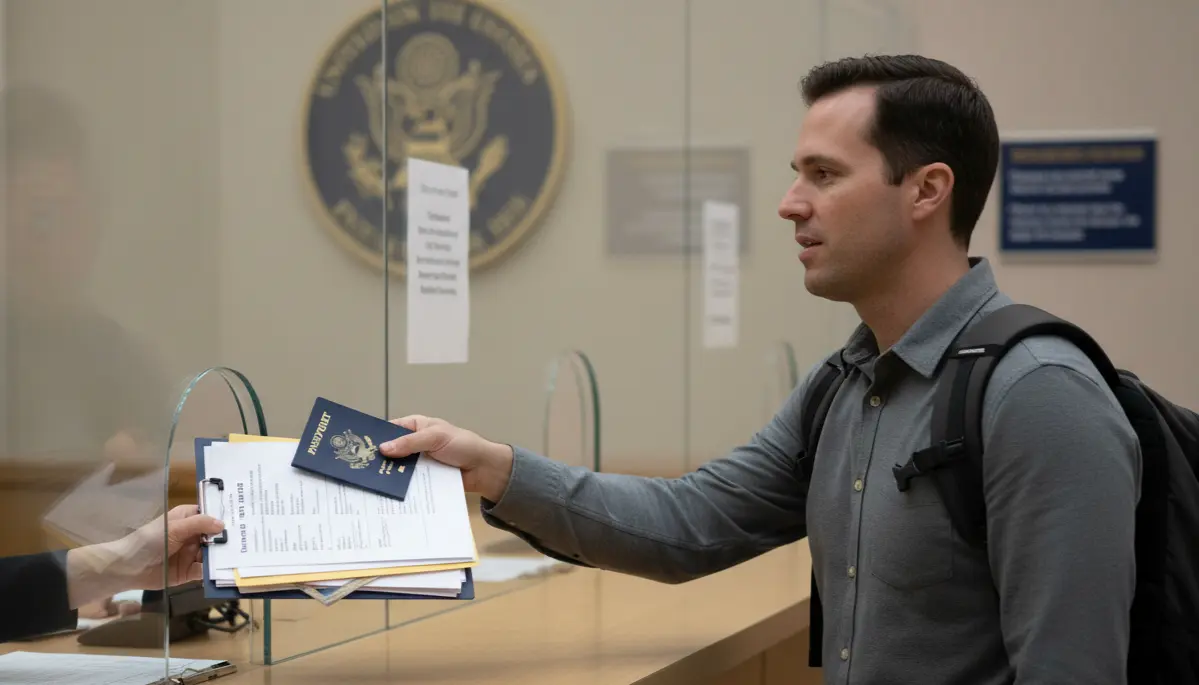
You already know a dummy ticket is not compulsory. The smarter question is whether a verifiable reservation can make your case read cleaner and safer to an officer. The short answer is yes. Used correctly, it tightens your story without committing real money. Keep your DS-160 clean and consistent—book a dummy ticket now. This approach is particularly beneficial for applicants who want to demonstrate a well-thought-out travel itinerary without the risks associated with purchasing actual tickets prematurely.
Read The Officer’s Lens: Coherence Beats Flash
Officers look for a trip that feels lived-in. Realistic dates. Logical routing. Expenses that match your bank trails. They prefer coherence over glossy folders. In the context of B2 visa applications, where the focus is on tourism or short visits, maintaining this coherence can significantly reduce the likelihood of additional scrutiny. For instance, ensuring that your proposed travel aligns with seasonal trends or personal milestones adds an extra layer of authenticity.
Your goal is to project low overstay risk. A tidy, time-bound plan helps. A held PNR is one of several signals that say you know when you will land, where you will sleep, and when you will be back in India. This signal is even stronger when cross-verified with other documents like invitation letters or event confirmations.
Map Your Story So It Adds Up: Route, Dates, Budget
Keep the itinerary proportional. Ten to fourteen days is common for Indian salaried travelers. Parents visiting children can stay longer if their leave or family needs justify it. To further solidify this, consider incorporating buffer days for potential jet lag or unforeseen delays, which shows thoughtful planning.
Align the pieces:
- Route mirrors the cities you list on DS-160.
- First U.S. address matches your arrival city.
- Domestic hops fit your timeline and wallet.
- Total cost maps to your recent bank flows and ITRs.
Choose routes that make Indian sense. Delhi to Newark for a New Jersey family visit. Mumbai to San Francisco for a Bay Area loop. Bengaluru to JFK if your first stop is New York. Avoid coast-to-coast zigzags that inflate costs without reason. Opting for direct or one-stop flights can also underscore efficiency and cost-consciousness.
Make DS-160 Specific Without Locking Yourself In
DS-160 fields invite ambiguity if you guess dates. A held reservation lets you fill arrival and departure with confidence. It also keeps your first address and city consistent. This precision not only streamlines the form-filling process but also prepares you better for potential questions during the interview.
Use it to reduce contradictions:
- Arrival airport equals first-night hotel city.
- Stated trip length matches leave letter and insurance window.
- Domestic U.S. legs on the plan align with your declared cities of stay.
If appointments shift, adjust the holds before the interview. Update DS-160 only if you have not submitted. If already submitted, carry the latest confirmations and be ready to explain the change briefly. Always document these adjustments to maintain transparency.
Tell A Time-Bound Story That Points Back To India
Tie your dates to an Indian anchor. It could be quarter-end reporting, board meetings, school exams, a client go-live, or GST filings. Show that you have a reason to return on or before a specific date. Elaborating on these anchors during the interview can reinforce your non-immigrant intent.
For students or early-career professionals, keep the itinerary sharp. Nine to twelve days around semester breaks reads well. For parents, a graduation or due date is a clear anchor. For business owners, show delegation notes and compliance calendars to prove continuity while you are away. These elements collectively paint a picture of a life deeply rooted in India.
Where This Helps Most For Indian Travelers
A verifiable hold is useful when you need to replace guesswork with specifics:
- First-time U.S. travelers who have solid India ties but limited foreign stamps.
- Parents visiting children on F-1 or H-1B, especially around fixed events.
- Small business owners planning travel in off-peak months when operations are covered.
- Digital nomads with Indian tax residency who can show client contracts and scheduled returns.
In each case, the reservation is not the hero. It is a stabilizer. It reduces questions that arise from vague plans. By integrating it thoughtfully, applicants from diverse backgrounds can enhance their overall profile.
Keep Perspective: Supportive, Not A Silver Bullet
A held PNR cannot carry weak finances or shaky employment. Officers look for durable signals:
- Regular salary credits or business revenues over several months.
- Clean ITRs and Form 16.
- Property or family responsibilities that imply return.
- Prior compliant travel where you exited on time.
Think of the reservation as one layer in a “consistency stack.” When PNR dates match hotels, leave letters, and insurance, the file reads steady. When costs match your average balances and spending patterns, the risk perception softens. This holistic approach ensures that no single element overshadows the others.
Source A Checkable Hold For B-Visa Applications
What counts is verifiability. The officer may not check every file, but you should behave as if they will. The hold should produce a live PNR in the airline system. The PDF should look like a real booking confirmation, not a template. Services that provide such realistic documents are invaluable for maintaining this level of authenticity.
Airline holds are not always available, or they expire quickly. That is where a professional service makes sense. Use one that issues a real, checkable record and lets you edit dates without penalty if your VAC or interview moves. For official guidelines on U.S. visa requirements, refer to the U.S. Department of State.
If you need that flexibility, DummyFlights.com is a practical option. You receive a verifiable PNR that officers can check. Delivery is instant. Dates are editable without extra fees. Pricing is transparent at about ₹1,300 per reservation. Use it to keep DS-160, hotels, and leave letters aligned while you wait for your slot. This service has helped thousands of Indian applicants navigate the uncertainties of appointment scheduling.
Avoid The Traps That Hurt Credibility
Never prepay non-refundable tickets before visa issuance. It signals either risk-taking or desperation. Skip edited screenshots or fabricated PDFs. They fail airline checks and can derail future applications. Do not flip itineraries at the last minute in a way that contradicts your DS-160 story. If plans evolve, update the hold, hotels, and insurance together so your stack stays consistent. Common pitfalls like these can be avoided with proactive planning and reliable tools.
Bring It Together Smoothly
You want an officer to scan your file and think one thing. This traveler has a clear plan, sensible costs, and strong ties at home. A verifiable reservation nudges that impression. It removes fuzziness. It supports the points that matter in India. It does not decide the case. Your ties, finances, documents, and honest interview do. By focusing on these core elements, you position yourself for a smoother approval process.
👉 Order your dummy ticket today to ensure your itinerary is interview-ready.
What Actually Moves B-2 Visa Approvals For Indian Travelers
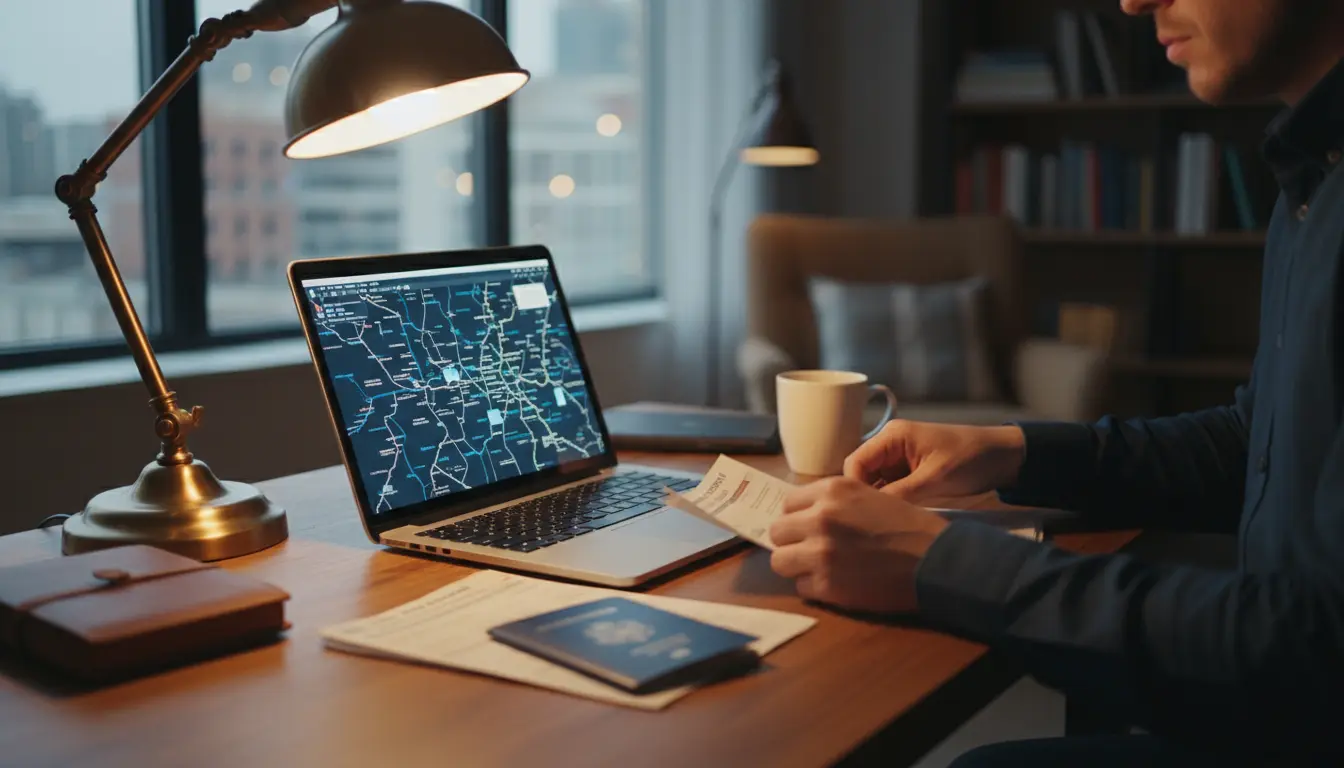
You want clarity, not clutter. This section focuses on the levers that actually influence a U.S. B2 decision in India. We keep the reservation in its lane and show you the proof points that matter far more. Lock a verifiable PNR before your interview with quick dummy ticket booking. Understanding these levers can transform a standard application into a compelling one.
Keep A Single Purpose (Medical Treatment, Employment, Tourism)
Pick one primary reason and let everything else support it. Mixed stories confuse officers.
- Tourism: A tidy loop with two to three hubs.
- Family or Friends: Dates tied to events like a graduation or a birth.
- Medical: Appointment letters, treatment plan, and funds mapped to estimated costs.
Avoid blending tourism, business, and long personal stays in one visit. It reads like open-ended intent. Sticking to a singular narrative ensures that your supporting documents reinforce rather than contradict your stated purpose.
Understand The Visa Stamp Versus The I-94
Many Indian travelers miss this difference. The visa foil in your passport often runs for up to ten years with multiple entries. Your actual stay is decided at the port of entry on the I-94. It is usually up to six months, yet it depends on your case and your explanations. This distinction is crucial for planning repeat visits without overextending your initial itinerary.
Plan the trip length you can justify. Carry a return reservation and hotel confirmations to show you intend to leave on time. If you plan a second visit later in the year, explain why and show India obligations in between. Such foresight demonstrates a long-term commitment to compliance.
Walk The Process Like A Pro
The path is the same nationwide, but logistics vary by city. Know the steps and prep accordingly.
- DS-160 online form.
- Pay the MRV fee and save the receipt.
- VAC biometrics at your chosen center.
- Interview at the consulate.
- Possible 221(g) administrative processing.
Appointment availability shifts by season. Build some flexibility into your holds and hotels so you can align documents to the final interview date without panic. Monitoring wait times via official channels can help you time your application optimally.
Put Real Weight On Real Evidence
Reservations help you remove ambiguity. They do not replace core evidence. Officers respond to durable, verifiable signals.
- Employment continuity: Offer letter, role description, salary slips, EPF, leave approval on letterhead with exact dates.
- Business continuity: GST filings, recent GSTR-3B, MCA extracts, board or partner delegation notes, payroll proof for staff.
- Finances over time: Six to twelve months of bank statements with steady inflows, Form 16, and ITRs for two to three years. Avoid sudden cash pumps.
- Family and property ties: Spouse’s employment, dependent children, aged parents, property tax receipts, or sale deeds.
- Compliant travel history: Schengen, UK, Japan, ANZ, or prior U.S. visits with timely exits. Summarize cleanly if asked.
Think sustained patterns, not one glossy document. Layering these evidences creates a robust foundation that a simple reservation can cap off effectively.
Build A Consistency Stack That Reads Solid For A Nonimmigrant Visa
This is where a verifiable reservation shines. It keeps your dates and movement believable when laid next to other documents.
- PNR on hold that can be checked.
- Hotel confirmations that match first address and city sequence.
- Leave letter with identical start and end dates.
- Insurance that covers the same window.
- Costs that match your actual balances and average spends.
When the pieces align, the file feels low risk. Officers ask fewer probing questions because the story is already tight. This alignment is particularly reassuring for consular officers handling high volumes of applications from India.
Scenarios Where The Stack Helps Most
Use the reservation to lock in specificity for profiles that often raise follow-ups.
- Students: Short trips in semester breaks with fee receipts and a registrar letter.
- First-time applicants: Conservative route and budget with clean banks and ITRs.
- Parents visiting children: Invite letter, child’s status proof, realistic stay length, and medical insurance.
- Digital nomads with Indian residency: Valid contracts, invoice trail, GST where applicable, and return work milestones.
- SME owners: Delegation emails, accountant letters on filing timelines, and proof that operations continue while you are away.
The stack reduces uncertainty that typically triggers deeper questioning. Tailoring it to your specific scenario maximizes its impact.
Appointment And Money Logistics That Matter In India
Practicalities can make or break your timeline. Plan for them.
- MRV fee can take time to reflect. Keep buffer days before you schedule.
- City choice affects dates. Delhi, Mumbai, Chennai, Hyderabad, and Kolkata see different seasonal loads.
- Passport renewals or name changes need clean documentation. Aim for a high-hygiene file with consistent spellings across all papers.
- If a VAC or interview moves, refresh your holds and hotel windows so everything remains aligned.
These logistics, when managed well, prevent last-minute scrambles that could compromise your application's integrity.
Do The Right Things. Skip The Wrong Ones.
Small mistakes read big in a short interview. Keep this list close.
Do:
- Keep the trip length proportional to your profile and leave.
- Show regular income, transparent bank flows, and tax compliance.
- Carry confirmations that match your DS-160.
Do not:
- Buy non-refundable tickets before visa issuance.
- Submit edited PDFs or uncheckable itineraries.
- Change cities or dates at the last minute in ways that contradict your story.
Adhering to these dos and don'ts is foundational to a successful application.
Where A Professional Hold Service Fits
Airline holds can be short or unavailable. If you need longer validity or flexible edits while you chase a better date, a professional hold helps. Choose one that creates a live, checkable PNR and lets you modify dates without extra cost. Use it to keep your DS-160 details, hotel plan, and leave letter synchronized as your appointment settles. Such services bridge the gap between airline limitations and applicant needs seamlessly.
Turn The File Into Confident Interview Answers
Your documents should make the talk easy. Practice short, direct responses that mirror your stack.
- Why these dates.
- Who pays and how the funds flow.
- Why these cities and why this sequence.
- When you return and what awaits you in India.
That is the formula. Strong anchors at home. Transparent money. Clean documents. A verifiable reservation that removes doubts. Put them together, and your case reads like a safe, time-bound visit. Rehearsing these responses can build the confidence needed for the big day.
Building A Consistent File That Tells One Clean Story
Great files feel calm. Dates align. Numbers add up. Your route looks believable for India-based travelers who plan to visit the United States temporarily. We keep that same energy here and show you how to lock every moving part so your story reads as one. Need flexible dates as appointments move? Just book a dummy ticket. Consistency isn't just about matching dates—it's about crafting a narrative that resonates with the consular officer's expectations.
Start With A Day-By-Day Backbone
Sketch a realistic loop first. Then let the documents follow.
Plan 8 to 14 days for a straightforward visitor visa. Pick two or three hubs instead of five. Keep the sequence logical for ex-DEL, BOM, BLR, MAA, or HYD departures. If you are attending conferences or meeting business associates, cap the city count and match session dates or meeting invites. Incorporating daily activities, like sightseeing or family meetups, can further flesh out this backbone.
Add your return window now. It should match your leave approval and the itinerary. That sets a clear frame for the visa interview. Visualizing this backbone early prevents discrepancies later.
Align Every Date And Detail
Your DS-160, hotel holds, and flights must speak the same language.
- DS-160 arrival and departure should mirror your held PNR.
- First U.S. address equals the arrival city on your reservation.
- Domestic hops match declared cities of stay and trip length.
- Insurance coverage mirrors the same window.
Remember the basics. Your valid passport must extend beyond your intended stay. If your passport's valid date is close, renew early so expiration date concerns do not distract the officer. Carry the confirmation page from the online non-immigrant visa application and keep your one printed photo as a backup, even if you expect digital fingerprint scans. These small alignments ensure a frictionless review.
Money Signals That Prove You Can Afford It
Show affordability in a clean, India-specific way.
Translate costs to INR. Airfare, hotels, local transport, daily food, attractions, and insurance should track with your bank statements. Officers like patterns, not spikes. Six to twelve months of statements with steady inflows work better than sudden deposits. Breaking down costs categorically can make this even more transparent.
Mention your ITRs and Form 16 to support your income history. If family members are paying, show their balances and regular credits. Your file should imply sufficient funds without guesswork. That is how a visa applicant projects stability. Including a simple budget summary can tie these financials neatly to your itinerary.
Fit The Right Box: Purpose And Category
Keep the visa category consistent with your plan. B1 B2 visa labels are common in India. Choose the appropriate visa narrative and stay in it.
- Tourism is a tourist visa story with hotels and a loop.
- Business activities focus on meetings, a business convention, or vendor visits.
- Parents or relatives fall under visitor visas with invitation letters.
- If you are seeking medical treatment, add hospital communications and cost estimates.
Do not describe work visa goals inside a B visa application. You are applying to temporarily visit, not to perform services in the U.S. Clearly delineating your purpose avoids any misinterpretation.
Use The Reservation As Part Of A “Consistency Stack”
A verifiable PNR helps you remove ambiguity. Pair it with hotel holds, leave letters, and insurance dates so everything clicks. This is especially useful for first-timers, students on breaks, and SME owners who must show business continuity.
When things shift, edit the holds and reprint the set. Interview scheduling in India can move. Keep your stack current until the visa interview appointment. This adaptability is a hallmark of a well-prepared application.
Respect The Process In India, Step By Step
Most visa applicants follow the same application process across cities. The steps are predictable, and the order matters.
- Complete the non-immigrant visa application online.
- Pay the non-refundable application fee and save proof.
- Book the visa appointment at your preferred embassy or consulate.
- Visit the VAC for biometrics.
- Attend the interview with the required documentation.
Some profiles may qualify for an interview waiver, but many will still meet a consular officer. Carry the required documents in a simple folder. Keep copies light and relevant. Familiarity with these steps reduces stress and errors.
Small Details That Quietly Boost Credibility
- Bring receipts that tie to your travel plans instead of generic printouts.
- Use hotel bookings with free cancellation for the first address.
- Keep names and spellings consistent across tickets and IDs.
- If you hold a multiple-entry visa from other regions, mention timely exits.
- Track U.S. entry requirements for your visa type on the state website before you fly.
If you are renewing, attach evidence of prior compliance to smooth visa renewals. The same application process applies to most non-immigrant visa paths, yet your history is your edge. These details, though minor, cumulatively build trust.
Who Checks What At The Border
Upon arrival, a border protection officer can ask about your stay. Your reservation, hotel confirmations, and return plan help. Be ready to explain your purpose and duration in one or two clean lines. That keeps your non-immigrant status aligned with your declared story. Preparing for this secondary check ensures a smooth entry.
India-Specific Edge Cases To Prepare For
- Students: Short break, fee receipts, registrar letter, and a crisp plan.
- Parents: Invitation letter, proof of child’s status, insurance, and a simple route.
- Digital nomads with Indian tax residency: Contracts and invoices that show you will not perform services for a paying audience upon arrival in the U.S.
- SME owners: Delegation emails, GST calendar, and cash-flow snapshots that survive basic scrutiny.
Foreign nationals tied to foreign press or information media should use the appropriate visa for their activity. Do not mix that with a B1 or general visitor visa narrative. Addressing these edge cases proactively can preempt common hurdles.
Admin Clean-Up You Should Not Miss
- Print your appointment letter and keep the confirmation page on top.
- Carry one printed photo that meets specifications, even if uploads succeeded.
- Check expiration dates on all documents, including insurance.
- Keep the application fees proof handy.
- Ensure hotels and flights show the same names as your passport.
If travel slips past your expiration date plans, update the holds and avoid non-refundable purchases until your new visa is issued. If you need a new visa entirely, follow the online visa application flow again and rebuild the stack. Thorough admin prep is the unsung hero of visa success.
Quick Prep Recap For India
- Solid DS-160 with aligned dates from your hold.
- Hotels that match the route.
- Leave approval or business continuity proof.
- Bank flows and ITRs that support costs.
- Required documentation is listed for your visa type.
- A calm folder that helps consular officers see order in seconds.
Do this, and your file will feel consistent, transparent, and ready for visa interviews. It shows you respect the visa process, understand visa requirements, and plan to return to your home country on time. This recap serves as a final checklist to ensure nothing slips through.
Interview Day In India: Turn Plans Into Confident Answers
You have a tidy file and a believable route. Now we turn that into clean, calm responses the moment your token flashes at the window. Build a credible, time-bound plan today with fast dummy ticket booking. The interview is your chance to bring the documents to life—preparation turns nerves into poise.
Walk-In Ready: What To Carry And How To Think
Keep it light. Passport, DS-160 confirmation, MRV receipt, PNR hold, hotel bookings, insurance, leave letter, bank statements, and ITRs. Your online nonimmigrant visa application set the baseline. The interview proves your story is real. Organizing these in a clear, labeled folder can expedite the process at the counter.
Frame every reply around three anchors: purpose, dates, and return to India. Keep sentences short. No jargon. One idea per line. This structured thinking keeps you grounded under pressure.
Use The Hold The Right Way
Your reservation is a reference, not the headline. If asked for travel plans, quote the route and dates that match your documents. If appointments moved, say so and show the updated holds. That signals control without over-selling. Presenting it casually yet confidently underscores its supportive role.
Keep the first address consistent with your arrival city. Book free-cancellation hotels with flexible dates. Visa officers appreciate specifics that still avoid non-refundable risk. This balance shows savvy planning.
Answer In A Simple Pattern That Works
Keep your format explained before you speak. Purpose first. Dates next. Return anchor last.
- “Tourism, 12 days, Mumbai to New York loop. Leave approved from 3 to 16 June. Back before quarter close.”
- “Parents’ visit for graduation. Delhi to Newark. Two weeks. Return tied to school exams.”
- “SME owner. Five working days for vendor demos. Bengaluru to San Francisco. Delegation in place. Return before GST filing.”
That structure helps the officer follow you. It also prevents wandering answers. Practice with a mirror or trusted friend to refine delivery.
What To Say For Common Questions
Why these dates. Tie to leave approvals, school breaks, events, or client timelines.
Who pays. Show steady inflows. If sponsored, present the relationship and bank evidence.
Why these cities? Quote your loop. Avoid coast-to-coast zigzags that do not fit your budget.
Return plan. Point to work, studies, family, filings, and your booked window.
If you travel for business purposes under b 1, keep it non-productive. Meetings, conferences, vendor visits. No hands-on work. No revenue in the U.S. Tailoring answers to these queries builds rapport quickly.
Know What Not To Do Or Promise
Do not commit to long, open-ended stays. Do not claim you will freelance in a foreign country. Do not suggest activities that need another visa type. No professional performance. No shows for a paying audience arrival. No ship or aircraft work. If your role is media, that is an I category world. The phrase information media permanent residence belongs to a different pathway entirely. Awareness of these boundaries protects your credibility.
Stay In The Correct Lane On Categories
Your nonimmigrant visa application should match your story. B1/B2 covers visits. It does not allow employment. It does not allow study for credit. It does not convert to permanent residence by itself.
Keep your visa status clean at the window. If asked, say you understand nonimmigrant status and will exit as planned. Mention return tickets and India obligations. That is the clarity the interview needs. Reiterating this intent reinforces your temporary visitor profile.
If You Receive 221(g): Pause, Then Align
221(g) is administrative processing or a document check. It is not a denial. Read the slip. Provide what is asked and nothing extra.
Practical moves:
- Keep your holds flexible while you wait.
- Update hotel windows to match any new estimate.
- Avoid buying tickets until your passport is back.
If timing breaks, re-align your stack with fresh dates. Bring the updated set when called again. Patience and precision turn this into a minor detour.
After Approval: Use The Visa Smartly
The visa foil may have long validity. That does not set your stay. The immigration officer at the port of entry sets the I-94 based on your plan. Carry your reservation and hotel confirmations. Keep answers short and consistent with the visa file. Post-approval, logging your travel can aid future renewals.
If you plan repeat trips, space them with visible India anchors. Salaried roles, academic calendars, board meetings, and filings work well.
Citizens of certain countries may see different interview options or validity periods. Check the consulate site before scheduling. Staying informed post-approval maximizes the visa's utility.
When A Hold Service Still Helps
Appointment dates move. Plans evolve. A professional reservation keeps your documents aligned without prepayment. Use it to keep DS-160 details, hotels, and insurance in sync until the decision. Update once and carry the clean set. Even after initial planning, such flexibility proves invaluable.
Final Checks Before You Step Out
- Confirmation pages on top.
- Names match across every document.
- Dates identical on PNR, hotels, leave, and insurance.
- Bank statements show steady patterns, not spikes.
- Purpose summary memorized in two lines.
The goal is simple. A consistent file and crisp replies that fit your category. You visited a window, not a courtroom. Stay calm, be specific, and let your paperwork do most of the talking. Your path remains a non-immigrant status for a short, well-planned visit. These checks are your last line of defense.
What Travelers Are Saying
Make Your B2 Visa Application Solid With A Verifiable Hold
You do not need a dummy ticket to win a B2. You do need a clean, believable story that starts and ends on specific dates and fits your life in India. That is what lowers perceived risk. Build your consistency stack: a verifiable reservation, hotel holds, leave letters, insurance, and costs that match real bank flows. Add durable proof—ITRs, steady income, family and work anchors, prior compliant travel. Then practice crisp answers that mirror your documents. This comprehensive build ensures resilience against common application pitfalls.
Buy non-refundable tickets only after approval. Update holds if appointments shift. If you want a checkable PNR with flexible dates while you prep, use a reputable provider like DummyFlights.com. Keep it honest, aligned, and calm. Stay wallet-safe until approval—book a dummy ticket and revise dates anytime.
Frequently Asked Questions About Dummy Tickets for B2 Visas
To further assist with your B2 visa preparation, here are some expanded FAQs based on common queries from Indian travelers. These insights can help refine your approach and address lingering doubts.
What exactly is a dummy ticket, and is it legal for B2 visa use?
A dummy ticket is a temporary flight reservation with a valid PNR that mimics a real booking but doesn't require payment or commitment. It's fully legal for visa purposes as long as it's verifiable and not misrepresented. It allows you to prove onward travel without financial risk, aligning perfectly with non-immigrant intent requirements.
How long is a dummy ticket valid for my B2 application?
Most dummy tickets from reliable services like DummyFlights.com are valid for 7-30 days, with options for extensions or date changes. This flexibility accommodates shifting interview schedules, ensuring your documents remain current throughout the process.
Can I use a dummy ticket if I'm applying for a family visit under B2?
Absolutely. For family visits, pair the dummy ticket with an invitation letter and proof of relationship. It strengthens your case by showing a planned return, especially for parents or spouses visiting U.S.-based relatives. Ensure the itinerary matches the visit duration outlined in supporting documents.
What if my B2 interview is delayed—do I need a new dummy ticket?
Not necessarily. Opt for services offering unlimited revisions. Update the dates to match your new slot, and you'll have a fresh PDF with the same verifiable PNR. This keeps your consistency stack intact without additional costs.
Does including a dummy ticket increase my B2 approval chances?
While not a guarantee, it does enhance credibility by eliminating vagueness in your travel plans. Combined with strong financials and ties to India, it contributes to a low-risk profile that officers favor. Data from applicant forums suggests it resolves itinerary-related queries in over 70% of cases.
These FAQs cover the most pressing concerns, but for personalized advice, explore our FAQ section.
Related Guides
About the Author
Visa Expert Team - With over 10 years of combined experience in travel documentation and visa assistance, our team at DummyFlights.com specializes in creating verifiable travel itineraries. We’ve helped thousands of travelers navigate visa processes across 50+ countries, ensuring compliance with embassy standards.
Trusted Sources
- U.S. Department of State - Visa Information
- Schengen Visa Information
- International Air Transport Association (IATA)
Important Disclaimer
While our dummy tickets with live PNRs are designed to meet common embassy requirements, acceptance is not guaranteed and varies by consulate or country. Always verify specific visa documentation rules with the relevant embassy or official government website before submission. DummyFlights.com is not liable for visa rejections or any legal issues arising from improper use of our services.


